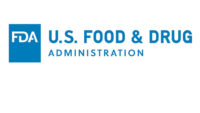Prepared Foods Exclusive: Regulatory Impact
The Consumer Product Safety Improvements Act (CPSIA), which defines “children’s products” and establishes limits on lead and a ban on phthalates, should be reviewed by producers who market food products in packaging which might contain lead or phthalate(s). While the definition of “consumer product” in the original act does not include/exempts food, the use of lead-based printing inks in a food contact surface, for example, would bring the product under Consumer Product Safety Commission jurisdiction.
“In addition, the use of lead-based printing inks on candy wrapper may subject a firm to regulatory action of the U.S. Consumer Product Safety Commission under the Federal Hazardous Substances Act.” (FDA Guidance for Industry). Producers should review their product packaging and particularly the certification and registration obligations under the CPSIA.
The FDA has previously issued its own guidance for Industry for maximum levels of lead in candy frequently consumed by small children and enforcement policy. The guidance sets a do-not-exceed limit of 0.1 ppm “because such levels are achievable under good manufacturing practices and would not pose a significant risk to small children for adverse effects.”
With regard to candy wrappers, the FDA states, “Generally speaking, if lead derived from a lead-based printing ink is found on the portion of the package that directly contacts food or, if such lead could be expected to migrate into the packaged food, the product would likely be regarded as being in violation of the Federal Food, Drug and Cosmetic Act. Use of the printing ink only on the outer (non-food contact) surface of the package does not ensure that it will not contaminate the food.”
In the Air
In August Senator Obama introduced S. 3358, the Improving Foodborne Illness Surveillance and Response Act of 2008. The legislation would seek to put in place systems to identify and investigate food pathogen and illness outbreaks, increase surveillance, data collection and incident registries. The legislation will die with the end of the current Congress, but new and similar legislation in the new Congress may enjoy the interest of the White House.
Proponents of new legislation may be able to look to a recent Government Accountability Office report on its review of FDA oversight and enforcement of its labeling rules. The GAO’s overall conclusion is that FDA does not have a sufficiently rigorous program in place to assure label compliance. With regard to food labeling oversight, the GAO found no reliable data on review activities and that data available on reviews undertaken showed that meaningful review of nutrition claims and imported foods is lacking. As to enforcement actions, the GAO noted that the number of food products and producers has increased while the number and severity of food enforcement actions has remained constant – suggesting a lack of vigorous oversight. The Report also noted that FDA authority and enforcement powers that might be suitable to improve FDA’s capabilities were lacking particularly in the area of inspections and recalls.
The report outlined a number of recommendations including several related directly to data collection and availability. FDA, noting that improvements in food labeling oversight may not directly further FDA’s primary mission of food safety, responded that the GAO Report did raise issues meriting additional discussion and consideration.
Salmonella
FSIS issued 66-08 its “Raw Product Destined for Ready-to-Eat Product Excluded from Salmonella Testing.” The exclusion is narrow and applicable only to establishments that process all products in a product class into RTE product or to another inspected establishment.
Prior Notice
A final rule on “Prior Notice of Imported Food Shipments” is available to take effect in May. A Compliance Policy Guide is available. Due to the apparent success of implementation of the current interim rule, the final rule closely tracks current procedures. The final rule establishes both minimum and maximum timeframes for the prior notice. The definition of “manufacturer” has been added and specific rules for use of registration numbers and manufacturer identification are indicated. Importers should review the new definitions and requirements.
Mark Hostetler is an attorney at Husch Blackwell Sanders LLP. Experienced in advising consumer product companies and focusing primarily in the food industry, he has guided producers, advertisers and marketers through regulatory proceedings, product recalls, new product introductions, and new advertising and promotional campaigns. He can be reached at Mark.Hostetler@huschblackwell.com.
From the December 5, 2008, Prepared Foods e-Flash
Looking for a reprint of this article?
From high-res PDFs to custom plaques, order your copy today!






